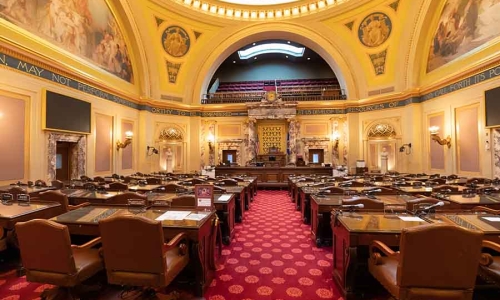Marijuana’s unrestricted advertising is raising concern across the USA

Seeking rules for promoting pot.
More than $2 billion in cannabis advertising has helped convince many consumers that the drug is without harm — but that’s contrary to growing evidence, according to speakers at a drug-policy conference in Washington.
Marijuana products, which are often sold without warning labels, are currently promoted in TikTok ads with cartoon characters and on billboards near schools. It shows the industry has fewer restrictions than alcohol or tobacco in some states. But that’s already begun to change in some places, and more regulation is coming.
The ads have helped spread the idea that marijuana is risk-free, especially among young people, says Gary Kirkilas, a Phoenix-based doctor. He spoke at a conference last week hosted by Smart Approaches to Marijuana, an organization that opposes the commercialization of cannabis. Kirkilas cited a study of 31 US states with licensed marijuana sales which showed that only 32% of them require warning labels or ban cannabis ads from using cartoon characters. Around half of the states don’t prohibit billboards in places where children congregate, and only around 35% prohibit depictions of cannabis being consumed.
“Does that seem right, Santa Claus and a water bong?” Kirkilas said in a presentation, showing a photo he took of a billboard that shows a reclining Santa with the slogan “Where Santa Gets His Dopest Gifts.”
Smart Approaches to Marijuana issued a report summarizing recent studies that show 30% of marijuana users have some form of use disorder, and cannabis-related US emergency-room visits rose 76% to 804,285 in 2021 from 2011. Some states in particular have been hard-hit, the report found, such as Colorado, which saw a 148% increase in marijuana-related hospitalizations since legalization, and Arizona, which had a 267% increase in weed-induced ER admissions from 2012 to 2020.
At the same time, 12th-grade students perceive the drug as less harmful now than they did in 1991, according to a study by the National Institute on Drug Abuse. That’s despite the fact that much cannabis now contains higher THC levels than in the past.
The perception of risk is even lower in some communities of color, said Teresa Haley, a branch president in Springfield, Illinois, for the National Association for the Advancement of Colored People. Haley said in an interview that marijuana has had more ill effects on her community since the state legalized it, and that some doctors downplay the risks of marijuana to patients from communities of color. “They see it as a cultural thing,” she said.
SAM’s report also found that the cannabis industry is saturating communities of color and lower-income neighborhoods with stores. This is something the tobacco industry was also accused of for years.
“We don’t want to make it enticing, available or easy for young people,” Haley said in her own presentation at the summit.
Kirkilas, whose specialty is pediatric services for the homeless population, said he has tried and failed to have Arizona pass laws to restrict advertising. Virginia, however, did recently pass a bill based on the same provisions, making advertising near schools or playgrounds or at sporting events a Class 1 misdemeanor. It also prohibited false or misleading advertisements. It’s expected to go into effect in July.
The cannabis industry is projected to spend around $2 billion on advertising in 2023, with that rising to $4.5 billion by 2030, according to estimates from Statista. Whether that growth materializes — along with the projected growth in sales for cannabis products themselves — could depend on how many people the industry can reach through advertisements.
The history of tobacco and alcohol has shown that regulations can tighten at any time. It wasn’t until 1970 that the US banned cigarette ads on television and radio — three-quarters of a century after they were first mass-produced. Since then, some countries such as Canada and Iceland have required warning labels with graphic images. Alcohol regulations and warning labels have also been prone to dramatic shifts over the years, with a new requirement coming in 1988 about the risks of birth defects in pregnancy and the risk of accidents while driving.





